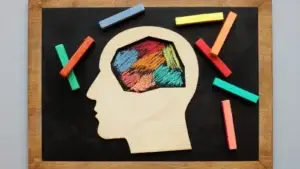Brainspotting…so what is it anyway? It sounds like some sort of scary procedure.
Brainspotting is a fairly new treatment modality that helps people process unresolved emotions by using eye movement.
This therapy was discovered by trauma psychotherapist David Burns, PhD. in 2003. Dr. Burns describes Brainspotting as “a brain-based therapy. A treatment that goes beyond the mind to gain access to the brain” (Grand, 2013, pg. 2).
“What’s in the brain is in the body and what’s in the body is in the brain.”
What is Brainspotting used for?
We utilize the Brainspotting technique at Renewed Wellness. This technique is a powerful tool for identifying and releasing hidden or neglected emotions. As a matter of fact, it can be used for anything that is bothering you.
Examples include:
-
-
- Past Traumas
- Anxieties and Fears
- Worries
- Imposter Syndrome
- Anger
- Physical Pain and Chronic Illness
- Loss
-
Brainspotting Simplified:
The Brainspotting technique is different than talk therapy.
The motto of Brainspotting is “Where you look affects how you feel.” (Grand, 2013, pg. 3). Our eyes and brain work together synergistically. Signals sent from our eyes get processed by our brain, and then our brain then determines where to look.
In cases where someone has experienced one or multiple traumas, that trauma overwhelms the brain’s processing abilities and traumas remain “stuck”. Clients often say in reference to their trauma, “That was so long ago and I’ve talked about it before. Why is it still bothering me so much?” This is because the trauma, at a biological level, remains stuck and unprocessed.
Brainspotting uses our field of vision to find these “stuck points”
These spots are where we are holding trauma in our brain. Your therapist will use a pointer stick or another object to assist you with holding your gaze on a specific external spot. They will slowly move the pointer across your field of vision, and look for any external cues, such as blinking, eye twitching, and body language, to indicate a “stuck point.” Your therapist will then hold the pointer in that exact spot.
“By keeping the gaze focused on a specific external spot, we maintain the brain’s focus on the specific internal spot where trauma is stored, in order to promote the deep processing that leads to the trauma’s release and resolution.” (Grand, 2013, pg. 4)
You are encouraged to verbalize (or internalize, if preferred) any thoughts and emotions that come up for you
Once we’ve found your Brainspot and maintain your gaze on an external point you are encouraged to verbalize. Sometimes this is like playing a video in your mind: one thought leads you to the next, and before you know it, you’ve released more than you knew was there.
Your therapist will also ask you to be very in tune with your body’s physical response. For some, this may be a tightness, heaviness, tingling, etc. As you process your trauma, your physical reactions should decrease. Remember, the body and mind are interconnected!
The Eye as a Window to Your Emotions
It can be hard to conceptualize that your eye movements are associated with emotions. I like to think about how it feels when someone puts you on the spot or asks you a question you don’t know. When you are taken by surprise or don’t know how to respond, you may look down or to a particular side briefly before responding. You do this subconsciously because your brain is processing your emotions to determine how to react. This is a simplified but understandable comparison of how Brainspotting works.
It is quite unique in that the thoughts that come up may be different than expected, and that’s totally ok! Brainspotting believes that your brain knows what to do, and will release thoughts and emotions purposefully, just as intended for your body and mind’s healing.
Brainspotting as a Viable Option
Certainly, Brainspotting is a great tool for people who have had difficulty processing emotions using other trauma-based therapies such as EMDR, Somatic Experiencing, and Cognitive Processing Therapy. In fact, Brainspotting has been shown to have lasting effects, and even endures in between sessions as your brain continues to unravel what’s been processed.
Start Brainspotting Therapy in New Bern, NC
Brianspotting can help you process the trauma from your past. And as a result, can help you live a brighter future! Our therapists can help you find the tools to cope in new ways, and we believe that you deserve to feel better, on your terms. We can help you wherever you are in the state with online therapy in North Carolina and South Carolina. Get started with therapy at our counseling practice in New Bern, NC with these steps:
1. Fill out this consult form.
2. Read about our skilled therapists.
3. Start benefitting from the support you deserve.
Other Mental Health Services at Renewed Wellness in New Bern, NC
At our New Bern, NC-based therapy practice, we offer a wide variety of services. Our therapists also excel in treating anxiety and stress, addiction counseling. For those going through a life change, we also offer life transitions counseling. Let’s work together to get you to a good place!
References: Grand, D (2013) Brainspotting: the revolutionary new therapy for rapid and effective change. Sounds True, Inc.








